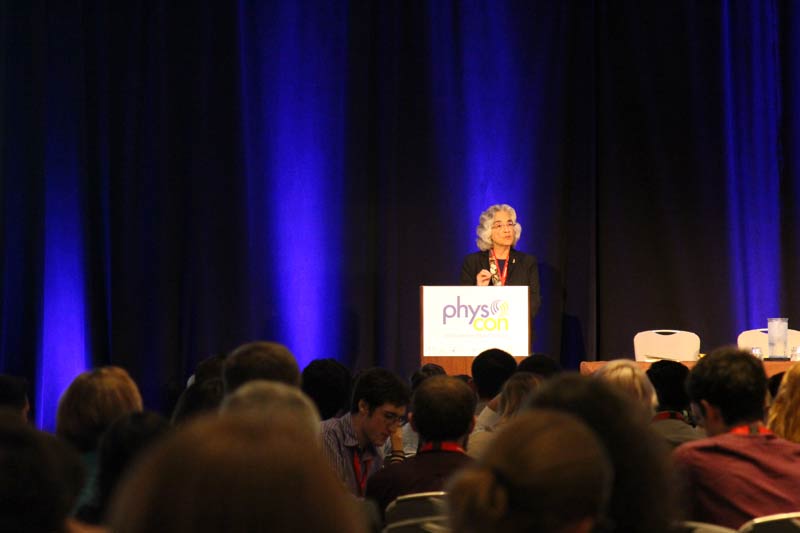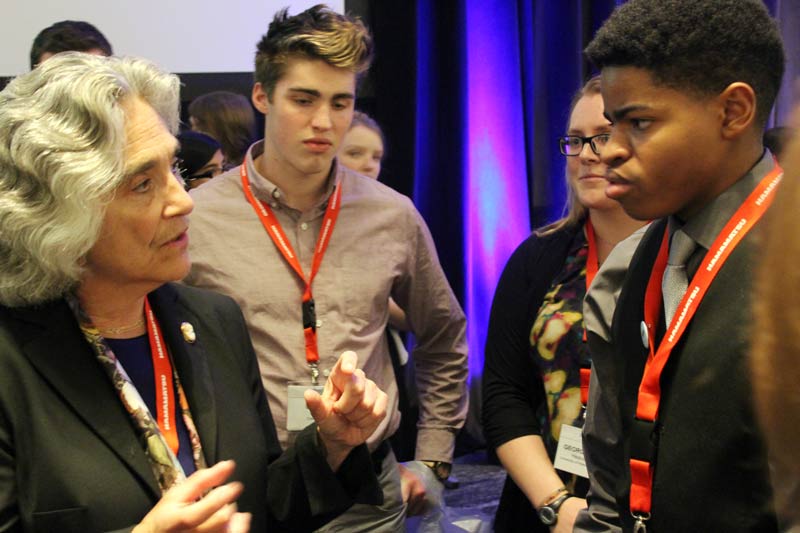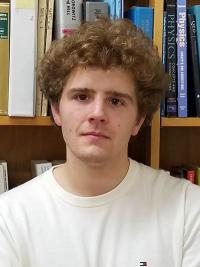Sigma Pi Sigma Physics Congress (PhysCon)
November 3, 2016 to November 5, 2016
San Francisco, CA
Meeting host: By:Evan Peters
SPS Chapter:

From a faculty position at Cornell University to director of the Stanford Linear Accelerator to Dean of Stanford’s School of Engineering, Dr. Persis Drell has followed a winding path through researcher and manager roles. Her talk was therefore a comprehensive one, combining physics with engineering and science with human elements.
Big Questions
In an interview before her talk, one of the first questions came from Persis Drell herself, wherein she pointedly asked why SLAC was even necessary. It was a first example of what she calls big questions, a type of question that she has constantly asked of herself. As a leader at multiple scientific institutions, she understands the roles of the public and government in influencing the trajectory of science, explaining, “if we can’t ask questions like that about ourselves…I can promise you somebody else [will].” Throughout the session, she insisted upon the importance of asking “why”, emphasizing the need for scientists to be open to big questions so that they can justify the importance of their research to themselves and to the public. After all, it is the people in science and government who are ultimately responsible for science.
The Human Element
In her talk, Dr. Drell had a lot to say about the human element—the people and personalities that make up professional physics. Her first point was about the lack of trust in science, of which she said, “we earned it.” She discussed the issue of public trust through a historic lens of science in the media that included the tobacco industry’s use of research to defend cigarettes, all the way up to modern issues like global warming.
She recounted an experience on Capitol Hill where she discussed climate change with a politician who had an opposing viewpoint. While she may not have fully persuaded him, by reaching out on personal level, Dr. Drell believes she improved the senator’s trust in science and formed a professional relationship that continued throughout her career. Through these sorts of personal connections, Dr. Drell argued that science can improve its standing in the public’s eyes and make its messages more accessible.
Drell warned listeners against overstating claims, another way scientists erode the public’s trust.“Arrogance is one of the biggest vices in the field,” she said. Scientists will constantly overstate claims to sell their ideas and secure funding. She challenged the audience to instead connect with the public to understand their perspectives. After all, she said, it’s people who do science, fund science, and use science.

Real Benefits of Diversity
On the topic of diversity, Drell brought up a big question that has seen national attention in recent years: “What unique perspective does a minority student bring to a physics class?”
She gave an example from SLAC’s history, describing how the culture became inward-looking and then began to suffer at an institutional level due to fixed mindsets. The solution, she argued, was to introduce a diverse set of viewpoints and skillsets to make more comprehensive decisions. And as dean of Stanford Engineering (and former director of SLAC) she’s committed to making diversity in physics a reality: “The single most important thing in the school of engineering, culturally, is diversity.”
Drell’s message on diversity resonated with students in the audience, provoking questions from concerned future physicists. Responding to a question about her specific tactics for improving diversity, Dr. Drell described her efforts at providing courses geared towards students who didn’t have access to physics in high school—a group which happens to be two-thirds women—and by attacking the psychology of bias. She suggested taking advantage of the competitiveness between institutions by comparing the diverseness of student bodies (thereby revealing places for improvement in universities’ demographics), and pointing out unconscious bias among physicists. However, she discouraged conformity as a route to acceptance. Dr. Drell stressed that female students don’t need to “fit in,” but should instead maintain their distinct, diverse points of view.
An Ecosystem of Scientific Progress
In the same way that diversity promotes stronger solutions by providing access to a broader pool of talents and ideas, unity among fields strengthens individual fields by bringing scientists together. After acknowledging a tendency for physicists to draw up a hierarchy of fields (to chuckles in the audience), Dr. Drell very seriously stated, “the health of all scientific fields is critical to the success of any one of them.” Speaking from her position of leadership in both physics and engineering, she elaborated the intricate cycle of current physics ideas becoming future engineering applications that enable the physicists to drive their research even further. She argued that researchers and engineers can push physics forward by promoting interdependence between all areas of science.
Later, answering a question raised about specializing in one’s own field, Drell encouraged emerging physicists not to specialize to such a degree that it becomes restrictive. Instead, she encouraged students and faculty to maintain broad knowledge by attending talks and reading scientific publications. Overall, her message was one of wide-reaching work to build an ecosystem of scientific progress between all fields.
Moving Forward
 Persis Drell’s talk was about standing up for people: Whether they be underrepresented groups within physics, scientists in other fields, or members of the public, she argued for engaging science with the humans who use it in their lives and develop it during their careers. By asking big questions of ourselves, emphasizing the human element, and promoting a diverse and broad-reaching scientific ecosystem we can be a part of Dr. Drell’s mission in designing the future of science.
Persis Drell’s talk was about standing up for people: Whether they be underrepresented groups within physics, scientists in other fields, or members of the public, she argued for engaging science with the humans who use it in their lives and develop it during their careers. By asking big questions of ourselves, emphasizing the human element, and promoting a diverse and broad-reaching scientific ecosystem we can be a part of Dr. Drell’s mission in designing the future of science.